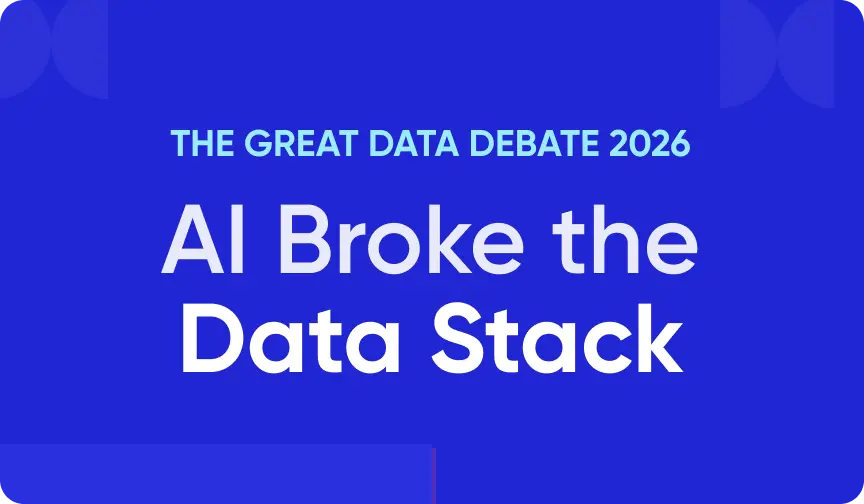How to Implement a Master Data Management Tool With RDS?

Share this article
Connecting a master data management tool with Amazon RDS ensures reliable and scalable database management. This is crucial for maintaining consistent and accurate master data across an organization. As a result, it enhances decision-making, operational efficiency, and compliance.
Amazon RDS is a managed service for operating relational databases in the cloud that offers scalability and ease of management—key requirements for MDM.
MDM focuses on creating a unified data source across an organization, necessitating a reliable, scalable database service. Amazon RDS’s ability to handle various database types and its management features like automated backups and patching align well with MDM’s goals of data uniformity and accuracy.
This synergy makes Amazon RDS a suitable backend solution for MDM implementations, addressing data consistency and integrity needs.
Modern data problems require modern solutions - Try Atlan, the data catalog of choice for forward-looking data teams! 👉 Book your demo today
Table of contents
Permalink to “Table of contents”- Why should you use master data management tool with Amazon RDS?
- Amazon RDS overview
- What is master data management?
- Steps to implement a master data management tool with Amazon RDS
- Guidelines for effective implementation
- Master data management for Amazon RDS: Related reads
Why should you use a master data management tool with Amazon RDS?
Permalink to “Why should you use a master data management tool with Amazon RDS?”Implementing a master data management (MDM) tool offers numerous benefits. Let’s explore some of these advantages.
- Ensures data consistency: MDM provides a single source of truth, ensuring data consistency across the organization.
- Improves decision making: Accurate and consistent data enhances the quality of business intelligence and decision-making.
- Increases operational efficiency: Streamlines data management processes, reducing redundancy and errors.
- Enhances compliance and data governance: Supports regulatory compliance and data governance by maintaining accurate and consistent data records.
Amazon RDS overview
Permalink to “Amazon RDS overview”Amazon RDS simplifies setting up, operating, and scaling relational databases in the AWS Cloud, offering resizable capacity for industry-standard databases and handling common administration tasks.
What is master data management?
Permalink to “What is master data management?”Master data management (MDM) is a process for creating and maintaining a single, reliable, and consistent data source for each entity in a business.
It involves de-duplicating, reconciling, and enriching data from various sources, ensuring data uniformity, accuracy, and governance. As a result, MDM enhances reporting, decision-making, and process efficiency.
Combining a master data management tool with Amazon RDS brings several benefits like enhanced data consistency and reliability, crucial for MDM’s effectiveness.
Amazon RDS’s managed service simplifies database administration, allowing organizations to focus more on data quality and governance, key aspects of MDM. Its scalability supports MDM’s need to handle varying data volumes, ensuring efficient data management across the enterprise.
Moreover, Amazon RDS’s ability to support multiple database engines aligns well with MDM’s versatility requirements, enhancing overall operational efficiency and decision-making accuracy.
Steps to implement a master data management tool with Amazon RDS
Permalink to “Steps to implement a master data management tool with Amazon RDS”Implementing a master data management tool with Amazon RDS involves the following strategies:
1. Evaluating tools for master data management (MDM) in an Amazon RDS environment
Permalink to “1. Evaluating tools for master data management (MDM) in an Amazon RDS environment”- Compatibility with Amazon RDS: Ensure the tool seamlessly integrates with Amazon RDS and supports the specific database engines used.
- Scalability and performance: Assess if the tool can handle the scale of your data and maintain performance as data grows.
- Data governance features: Look for robust data governance capabilities that align with your organization’s data standards and policies.
- Ease of use: Consider the user-friendliness of the tool, especially for non-technical users involved in MDM processes.
- Customization: Check for customization options to tailor the tool to specific business needs.
- Security and compliance: Ensure the tool meets your security requirements and compliance standards.
- Cost-effectiveness: Evaluate the total cost of ownership, including licensing, implementation, and maintenance costs.
- Vendor support and community: Consider the level of support provided by the vendor and the presence of a knowledgeable user community.
2. Missed aspects in evaluation
Permalink to “2. Missed aspects in evaluation”- Integration with existing systems: Overlooking how the tool will integrate with current systems can lead to increased complexity.
- Future-proofing: Failing to consider future business and data growth can result in a tool that becomes quickly outdated.
3. Making a clear business case
Permalink to “3. Making a clear business case”- Highlight efficiency gains: Demonstrate how the tool will streamline MDM processes, leading to operational efficiency.
- Quantify ROI: Present a clear return on investment analysis, including time and cost savings.
- Address risk mitigation: Explain how the tool will reduce risks related to data inconsistency and non-compliance.
- Showcase improved decision-making: Illustrate how better master data management will lead to more informed business decisions.
Guidelines for effective implementation
Permalink to “Guidelines for effective implementation”Common pitfalls in implementing a master data management tool with Amazon RDS include:
- Underestimating the complexity of data standardization, leading to inconsistent data formats.
- Choosing an inappropriate data model can complicate MDM processes.
- Inadequate data governance policies may result in poor data quality management.
- Data integration challenges, such as errors during data transfer, can also hinder effective MDM, making it a time-consuming and error-prone process.
These pitfalls can significantly impact decision-making and operational efficiency in an Amazon RDS environment.
Master data management for Amazon RDS: Related reads
Permalink to “Master data management for Amazon RDS: Related reads”- What is Amazon Relational Database Service (Amazon RDS)?
- Top 15 Benefits of Master Data Management in 2024
- Data Catalog vs Master Data Management: Differences, Similarities & Use Cases
- Metadata Management vs. Master Data Management (MDM)
- Difference between Master Data Management(MDM) and Metadata Management
- Data Management 101: Four Things Every Human of Data Needs to Know
Share this article





















